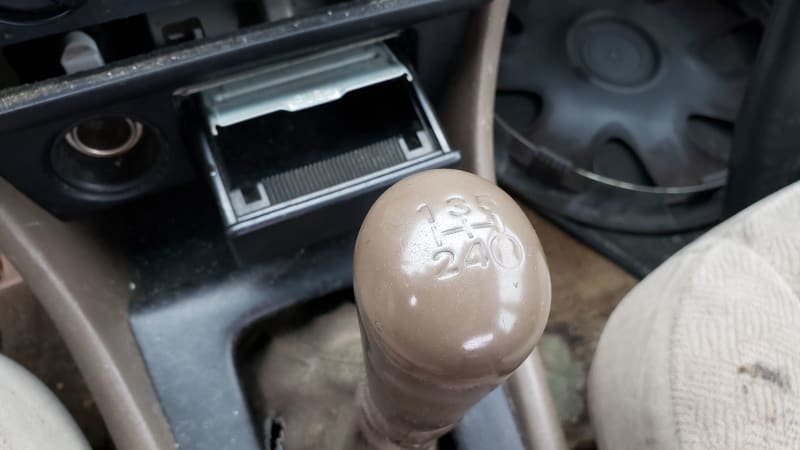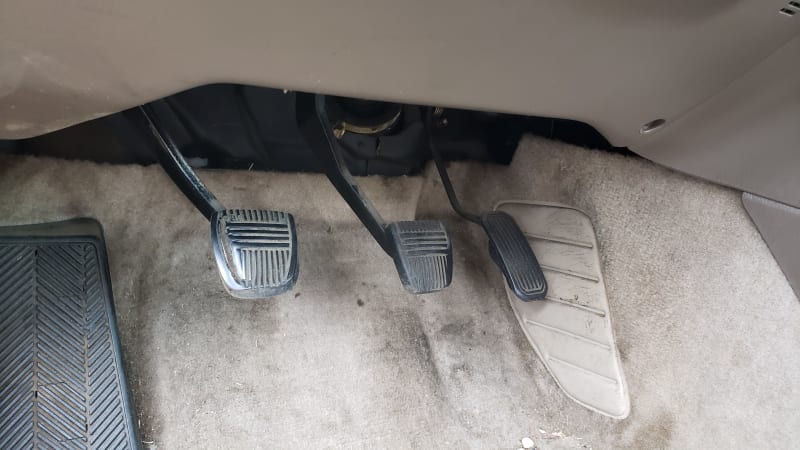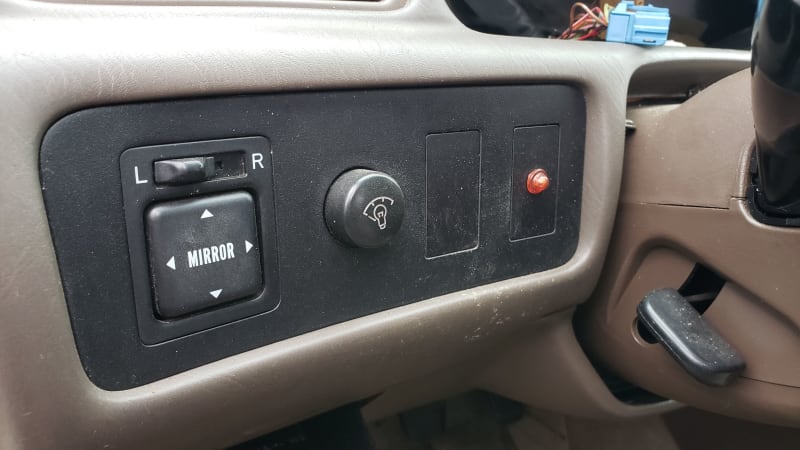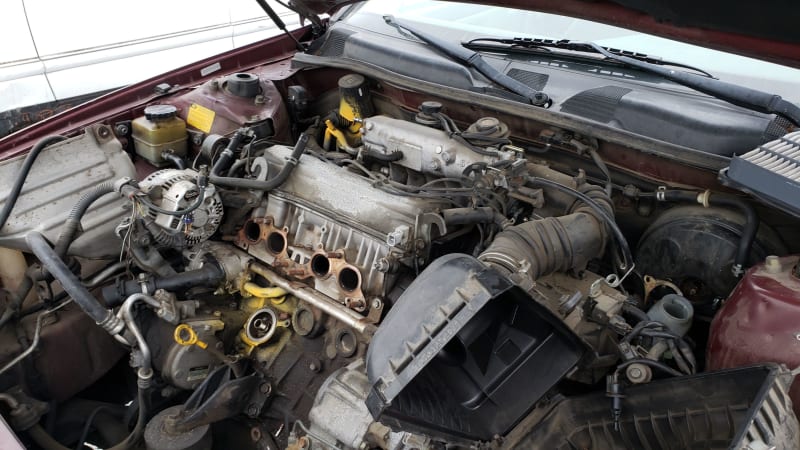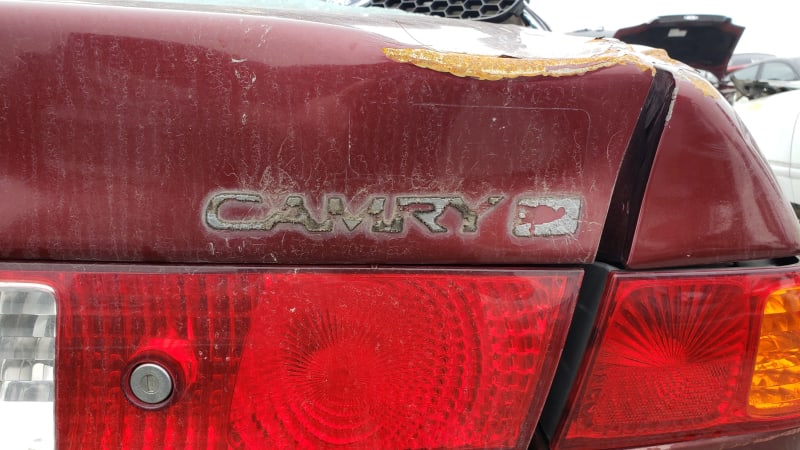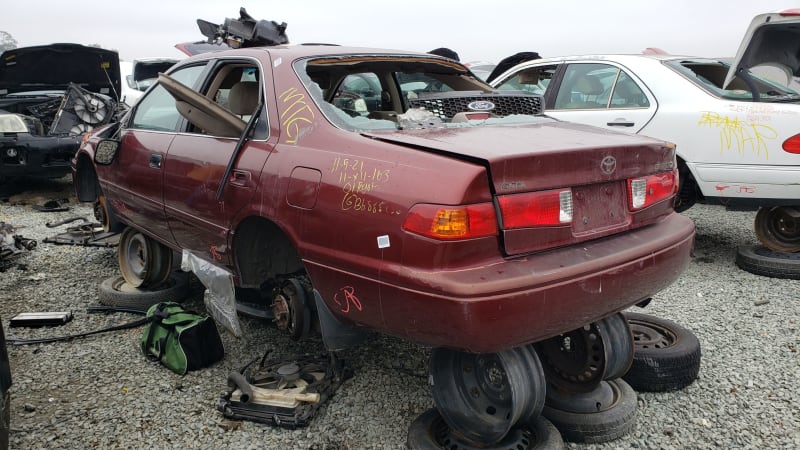I spend a lot of time walking the rows in big American car graveyards looking for interesting automotive stories to tell. In recent years I have been peering into every one of the thousands upon thousands of Toyota Camrys I see, looking for one thing: the gearshift lever of an exceedingly rare five-speed manual transmission. Even though Toyota USA offered a five-on-the-floor Camry from the very first ’83s all the way through the 2012 model year, you see, the overlap between the “Americans who want a new Camry” group and the “Americans who are willing to drive a manual transmission” group became vanishingly small starting in the early 1990s. Last year, I managed to spot a manual-equipped 1997 Camry and, six months later, a 2000. After that, I remained stuck on the last year of the 20th century (which was 2000, not 1999) in my three-pedal Camry quest… until a few weeks ago in Northern California, when I ran across this battered 2001 CE in Vintage Pearl Red.
One of the main reasons that automatics became so much more popular here in the 1990s was a simple one: purchase cost. If you wanted a new 1985 Camry Deluxe sedan with an automatic, it cost you an extra 800 bucks on a $8,948 car (about $2,105 on a $23,574 car in 2021 bones, or clams). That’s an addition of almost 9% to the out-the-door cost, and the relative cost of a two-pedal rig went up as the car’s sticker price went down.
By 2000, a manual-equipped Camry CE started at $17,675 while its slushbox-ified counterpart cost $18,475 (about $29,105 and $30,420 today). That’s still an $800 automatic ($1,315 in 2021), but it added a mere 2.75% to the cost of the car. For that price, why would any Camry commuter be wiling to juggle a Big Gulp, a cellphone and a shifter in stop-and-go traffic?
It’s worth noting that the original purchaser of this car paid $778 extra for the optional Value Package #1, which included air conditioning (not standard equipment on the base-grade CE Camry), power windows and power mirrors. This suggests that the buyer wasn’t just going for the cheapest possible Camry, but instead was the rare sort of driver who prefers a manual but still wants a no-nonsense sedan that will last a jillion miles.
American car shoppers were able to step into a Toyota dealership in 2001 and buy a new Camry LE with a five-speed manual and a 3.0-liter V6 engine making 200 horsepower. That car would have been an entertaining sleeper, but it cost $22,385 (about $36,860 now). On top of that, such a car shopper would have been drawn to the sleeker (and cheaper) Solara coupe. Meanwhile, a new 2001 BMW 325i sedan with 5-on-the-floor cost just $26,990 and had rear-wheel-drive, not to mention the 2001 Volkswagen Passat GLS V6 sedan and its 190hp for $24,050. If any of you have ever seen a 21st-century Camry LE with V6/manual setup, please let me know.
I’ve always thought that Toyota’s CE trim level stood for Cheap Edition, but in fact it means Classic Edition (someone pried off the CE badge on this car, but the build tag says it’s a CE). Most of the 2000s Camry CEs you’ll find will have started life as fleet cars, but few (if any) fleet buyers will choose anything with a manual transmission and thus this car was bought by an ordinary civilian purchaser.
The digital odometer means we’ll never know how many miles were on this car when it took that final tow-truck ride to this place, but I’ll bet it was well into the 200,000s and maybe beyond that. I’ll keep looking for an ’02 or later three-pedal Camry during my future junkyard explorations, but don’t hold your breath for a junked manual-equipped 2012 model any time soon.
US-market Camry television advertising got less exciting as the decades wore on.
In Japan, the ’01 Camry ads were slightly funnier.

